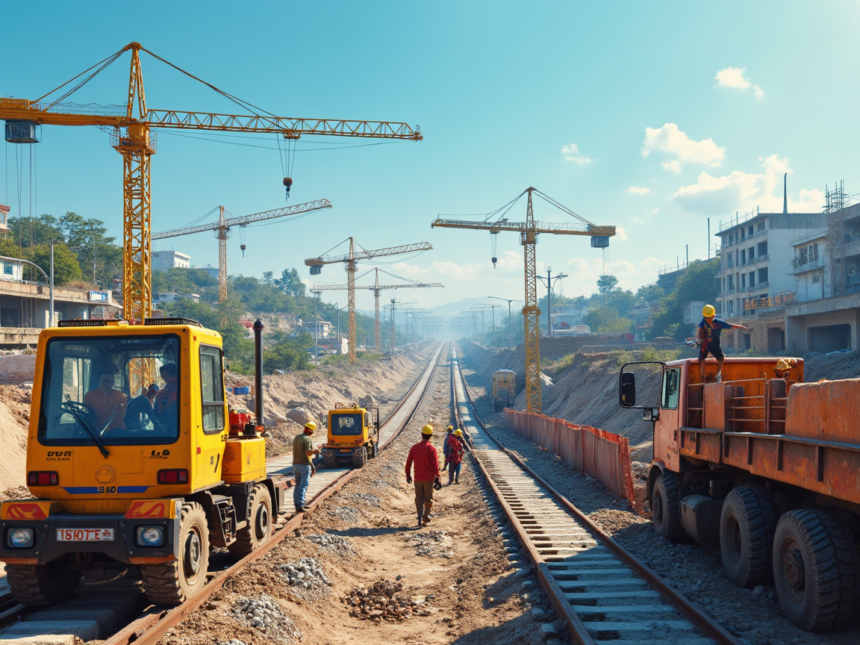The Odisha government has announced significant plans to extend the proposed metro train service in Bhubaneswar to enhance its viability and effectiveness. The metro project, which was initially planned as a 26-kilometer stretch between Biju Patnaik International Airport and Trisulia in Cuttack, is set for an extension. With an estimated investment of ₹6,225 crore, the expansion aims to improve connectivity, reduce traffic congestion, and provide a modern urban transport solution for the growing population of Bhubaneswar and its surrounding areas.
Background and Current Metro Proposal
The Bhubaneswar Metro project was conceived to address the increasing urbanization and traffic congestion in the capital city of Odisha. Bhubaneswar, known for its rapid growth in IT, education, and commercial sectors, has been experiencing a surge in vehicular traffic. To alleviate these issues, the state government, in collaboration with the Delhi Metro Rail Corporation (DMRC), has been working on a metro rail project.
The initial plan included a single corridor of 26 kilometers linking key areas such as the airport, railway station, major educational institutions, and business hubs. The metro route was designed to facilitate easier commuting, reducing dependency on private vehicles and improving overall traffic management in the city.
Need for Expansion
While the initial metro project was a significant step forward, urban planners and experts identified the need for further expansion to increase its utility. The government has acknowledged that extending the metro route beyond the proposed corridor would not only enhance ridership but also make the project more financially and logistically viable.
The Urban Development Minister, Krushna Chandra Mohapatra, recently stated that a detailed project report (DPR) is being prepared to reassess the metro routes and introduce necessary extensions. The revised plans will ensure that more areas, including growing suburbs and commercial zones, are integrated into the metro network, making it a more comprehensive urban transport system.
Potential New Routes and Extensions
Although the finalized extended routes are yet to be officially announced, some of the proposed expansions include:
- Linking to Khurda and Jatni: These rapidly growing areas on the outskirts of Bhubaneswar have seen an increase in residential and commercial development. A metro link to these locations would significantly ease daily commuting for thousands of people.
- Connecting to Chandrasekharpur and Infocity: With a high concentration of IT companies and corporate offices, an extended metro service to this region would be beneficial for professionals working in the technology and business sectors.
- Integration with Cuttack’s Transport Network: Strengthening connectivity with Cuttack, Odisha’s twin city, could greatly improve intercity travel and reduce congestion on existing roadways.
- Extending Towards Puri: As a major tourist and religious destination, Puri sees an influx of visitors throughout the year. A metro connection to Puri would provide a faster and more efficient mode of transportation for pilgrims and tourists alike.
Economic and Environmental Benefits
The expansion of the Bhubaneswar Metro project is expected to bring multiple economic and environmental advantages:
- Reduced Traffic Congestion: A well-planned metro network will reduce the dependency on private vehicles, thereby alleviating congestion on the city’s roads.
- Lower Carbon Emissions: Encouraging public transport use will lead to decreased fuel consumption and lower emissions, contributing to a cleaner environment.
- Boost to Real Estate and Business Growth: Metro connectivity has historically been linked to a surge in real estate development and commercial expansion. With more areas getting metro access, property values and business opportunities are expected to increase.
- Job Creation: The construction and operation of the metro system will generate employment opportunities, directly and indirectly benefiting the local economy.
Challenges and Future Roadmap
Despite the promising advantages, the Bhubaneswar Metro expansion also comes with challenges:
- Funding and Budget Allocation: A metro project of this scale requires substantial financial investment. The government is likely to explore funding options including central assistance, public-private partnerships (PPP), and international investments.
- Land Acquisition and Infrastructure Development: Expanding the metro network requires land acquisition, which can be a lengthy and challenging process. Ensuring proper compensation and relocation plans for affected residents is essential.
- Coordination with Other Transport Systems: Integrating the metro with existing bus services, railway stations, and other transport systems will be crucial for seamless connectivity.
The Odisha government is committed to addressing these challenges with strategic planning and efficient execution. The DPR preparation and subsequent approval processes will play a vital role in determining the final execution plan.
Conclusion
The expansion of the Bhubaneswar Metro project marks a transformative step in the city’s urban development. By extending the metro network to key residential, commercial, and industrial areas, the government aims to create a more connected and sustainable urban transport system. With proper planning, funding, and execution, the Bhubaneswar Metro could set a benchmark for modern urban mobility in India, enhancing the quality of life for residents and boosting economic growth in the region.





